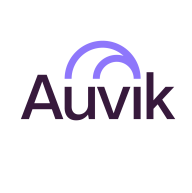

Cisco UCS Manager and Auvik Network Management compete in the data management and network management sector. Auvik seems to have the upper hand in flexibility and ease of deployment, particularly for businesses requiring fast cloud integration.
Features: Cisco UCS Manager offers robust integration of storage, networking, and compute resources. It provides ease of management within data centers, supports a wide range of applications, and offers flexibility in server deployment and central management. Auvik Network Management focuses on network discovery and visualization, providing real-time insights into network topology, easy deployment, and advanced alerting features.
Room for Improvement: Cisco UCS Manager faces challenges with integration, upgrade issues, and interface complexity. Users also seek improvements in automation and integration processes. Auvik Network Management could refine its reporting systems and enhance mapping accuracy for complex architectures. Users also desire better flexibility in alert customization and broader compatibility with network devices.
Ease Of Deployment and Customer Service: Cisco UCS Manager primarily operates in on-premises environments, requiring significant initial setup and technical expertise, but is backed by highly-rated customer service. Auvik Network Management offers diverse deployment options, including public and hybrid clouds, providing flexible and rapid deployment with excellent support, reducing implementation time significantly.
Pricing and ROI: Cisco UCS Manager has high ongoing licensing fees, considered a solid investment due to reliability and reduced hardware replacement needs. Auvik Network Management features a flexible pricing model based on the number of network devices, offering cost-effectiveness, especially for smaller organizations, though deployments with many devices might find per-device billing a hurdle.
I can manage all LAN uplinks and fiber channel storage uplinks directly from UCS Manager.
Cisco UCS Manager provides cost savings by reducing the time support staff spend on long deployments.
They were knowledgeable and responded quickly with accurate and useful information.
Although the support is good, resolving time takes longer than expected, especially for major issues that require escalation.
For a severity one case, a call ensures immediate assistance and resolution of the matter.
With Intersight, service requests are automatically generated, enhancing the user experience and providing timely resolutions.
Regarding Cisco tech, they are pretty good.
The platform scales well and supports our organizational needs.
Adding new chassis and extra blades is streamlined.
I would rate the scalability at nine out of ten, probably.
If there's a really complex problem, I would probably give it a ten since it gets escalated quickly.
We were unable to integrate Auvik with a geographical map, which limited our ability to track issues to specific buildings on campus.
Enhancements in API functionality and wider tool support for integration with PSA or RMM tools.
We would benefit from advancements in AI that offer firmware recommendations automatically, reducing the need for human intervention and vendor communication.
When changes are pushed, it can take their phone line off the system for twenty minutes to half an hour.
While it has been improved from using Java to HTML, simplifying the tabs would enhance user experience.
Auvik is pricey, and we were paying a lot for it, especially when compared to SolarWinds.
Recently, we acquired an excellent bundle with significant discounts, with offers like buying three servers and getting one free, along with UCSC and fabric included for free.
As long as they can afford it, there is a setup cost involved.
Its proactive monitoring and simplified troubleshooting have significantly impacted our efficiency in handling network management tasks.
Auvik Core's ease of use also enhanced troubleshooting speed and efficiency.
It supports ease of deployment, allowing for quick mass deployments in the data center, saving time and resources by doing so from a remote location.
Whenever there's a failure of any component, it's very easy to swap because you just disassociate that profile, remove the faulty blade, connect the new blade, and associate that profile, maintaining the same MAC address and worldwide port name.
One of the valuable features is the user interface base, specifically the C user interface.


Auvik is a network management software that provides real-time visibility and control over network infrastructure.
It automates network mapping, monitoring, and troubleshooting, allowing IT teams to easily identify and resolve issues.
With its intuitive interface and powerful features, Auvik helps businesses optimize their network performance and ensure smooth operations.
We monitor all IT Infrastructure Monitoring reviews to prevent fraudulent reviews and keep review quality high. We do not post reviews by company employees or direct competitors. We validate each review for authenticity via cross-reference with LinkedIn, and personal follow-up with the reviewer when necessary.